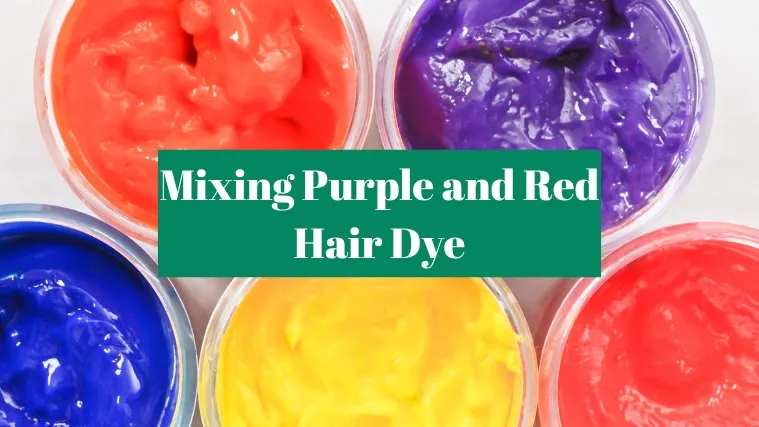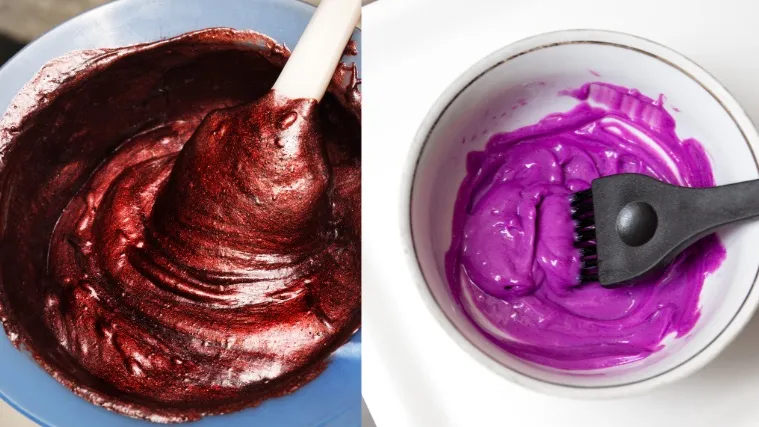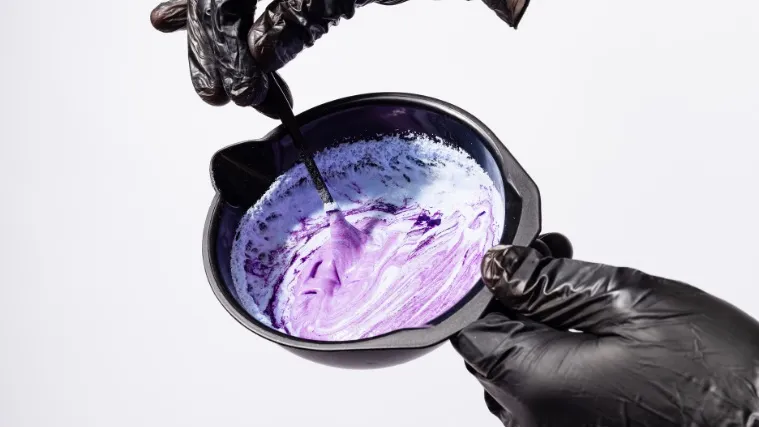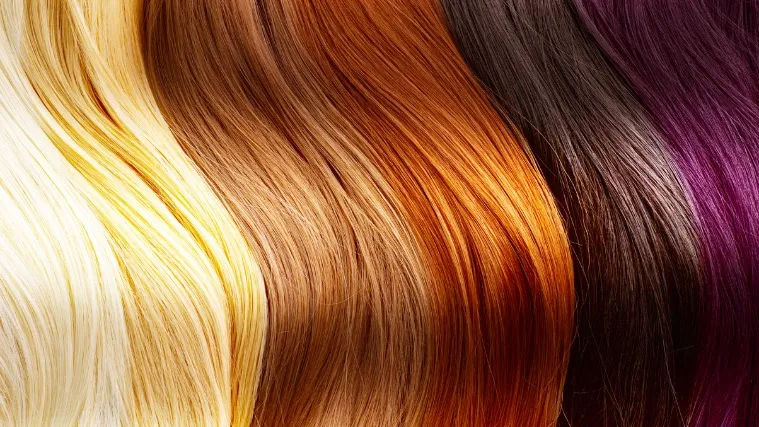So you’ve been wanting to color your hair a red-purple color, but you can’t find a single hair color that will get you the results you want.
Don’t despair! You can get just the color you want by mixing two hair dyes together, including red and purple.
Mixing purple and red hair colors evenly will result in a mainly purple color, but the shade of red will have an impact on the overall hue of the purple. The mixture can be redder if the red dye is the base of the mixture and only a small amount of purple dye is added.
Here’s what you should know about mixing purple and red hair colors, including how the colors you choose to combine will affect the outcome, how to properly mix the colors, and which type of color you should look to use to make the color you want.
What Happens When You Mix Purple and Red Hair Dye?
When it comes to mixing hair colors, purple and red are great options. It looks great, and pretty much anyone can rock some combination of the two colors.
It helps that purple and red are right next to each other on the color wheel. After all, purple is basically red with some blue mixed in.
Adding more red to that will shift the purple color more to the red, and adding purple to red is like adding diluted blue to it. All this makes red and purple combine smoothly without any canceling out or weird contrast.
When you look for the purple and red colors to mix together, you don’t only want to look at the hue of the colors: the shade of red will be incredibly important to how the color turns out.
If you choose a light red, the purple will end up softer and more subdued. If you choose a dark red, purple will be more intense and potent.
How to Mix Dye Correctly?
When you want to mix two colors of hair color, the first thing you need to do is pick colors that work together. I don’t mean aesthetically; I mean chemically. Choose your different colors from the same hair color brand for the best results.
If you mix brands, the different chemicals in the hair colors might not work together, or they may create a chemical reaction that ruins your hair color plans, whereas the colors from the same brand are typically made with the same chemicals.
You should also test the mixture to make sure you don’t get an allergic reaction to it by putting a little on the inside of your elbow to test it.
When you mix the colors together, use a plastic bowl, not a metal one. Mixing the dyes in a metal bowl will affect the way the hair color turns out by oxidizing the chemicals and making them less effective. It might even kick off a dangerous chemical reaction, depending on the chemicals.
Set up your bowl with newspaper, a plastic tarp, or an old, dark towel beneath it to protect the surface underneath from being stained by the colors. Don’t rely on trying to keep all of the colors in the bowl.
Accidents happen, and even if it only ends up being a few drops that fly out of the bowl during the mixing process, you don’t want that color staining your floor or countertop.
Now, you’re ready to start mixing the colors. You can start by mixing them evenly or in a 75-25 ratio, where you’ll use three parts: the primary color and 1 part of the other color.
Choose which one you want to be stronger: if you want it to be mostly purple, start by putting the purple in the bowl, and if you want the red to stand out, then start with the red color.
With the primary color in the bowl, start adding the other color, a little at a time, mix it with a plastic fork or a tinting brush, and look at the color. If it’s the color you want, then you’re done.
If not, then keep adding more of the second color until you get the color you want. Only add a little bit at a time, though. If you add too much, then it’s going to take much more of the primary color to fix it.
What Type of Hair Color Is Best for Mixing Purple and Red?
Semi-permanent hair colors are the best choice for mixing purple and red because they come ready to combine.
With a couple of packs of semi-permanent hair color, you can make any color between the two, and you can do it all at home without having to go to a salon or worrying about it coming out in your next wash.
Temporary hair color might be good to use if you want to test out how a red-purple color will look on you, but it might be difficult to replicate the same color should you decide you like it and want to use a dye that will stay.
Demi-permanent and permanent hair colors could also work. Still, the processes of mixing and applying those hair colors are more complicated, and you might want a professional to do it for you.
That might result in a color closer to what you want, or maybe even a color that matches you better than the color you expected, but it’s more expensive.
You would also need to be precisely communicative about the color you want. For the best results, that would have to involve finding the color online, preferably in a picture with someone with the same skin tone wearing the color you have in mind.
The colorist might also need to take into account your present hair color, though they should have more experience with that than you do, which is a good point in favor of getting your hair colored by a professional.
The final thing to consider is that you’ll want to make sure to use a hair color that won’t give you an allergic reaction. You can test that by putting a dab of the dye on the inside of your elbow.
Let it dry and watch for a reaction, then rinse it off. Keep an eye on the spot for at least 48 hours to see if it’s harmfully affected at all. If not, then you’re safe to use that hair color.
Check More Blogs Below:




